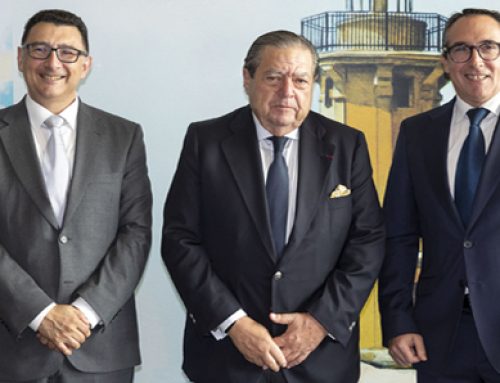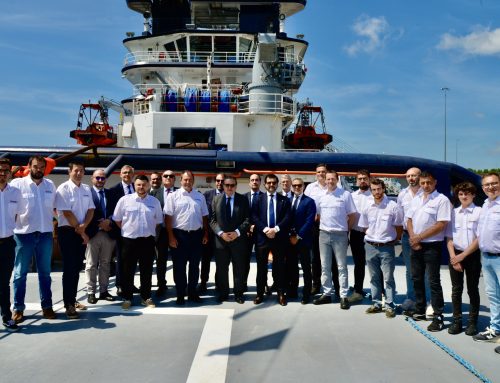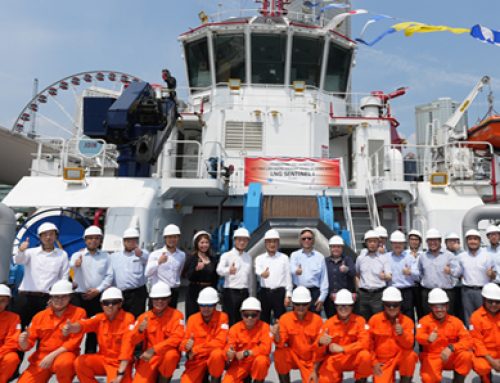Adventurous and keen photography enthusiast Juan Luis Burriel, Boluda Towage and Salvage mechanic at the Valencia base, came up with the idea of taking a corporate photo on the Antarctic continent
“It was a personal challenge, and although anyone can reach the Antarctic nowadays, frankly I wouldn’t recommend the journey to anyone, particularly the two-day Drake Passage crossing each way, with ten-metre waves during the thousand kilometre voyage.” 37-year-old Juan Luis Burriel, Boluda Towage and Salvage mechanic at the tugboat base in Valencia, describes his trip to Antarctica between 26 March and 6 April this year, where he was keen that his stunning photographs of the expedition should include one of the Boluda Corporación Marítima logo on the peninsula of this southern continent.
“Apart from Antarctica, I’ve already had adventures to Iceland and Norway, but it was the first time I was taking a corporate photo. I asked the Valencia chief of base Manuel Samper for some Boluda Corporación Marítima t-shirts. Although I was already very loaded down on the expedition with photography equipment weighing 12 kilos, I thought it would be a great idea to take a corporate photo to show my appreciation of the company,” explained Burriel.
After a thirteen-hour flight between Madrid and Buenos Aires, he took the four-and-a-half-hour journey from the Argentine capital to the southern Patagonia port of Ushuaia, the southernmost city in the world. Here he boarded the USHUAIA, an old, 84-metre-long oceangoing ship currently used for tourist expeditions, with 55 people from all over the world on board, as well as a group of ten fellow Valencian photography enthusiasts who also took part in the trip, organized by Objective Valencia.
Juan Luis has been aware about climate change since childhood, when he was an avid reader of science fiction novels and topics related to Antarctica, as well as being “a very introspective person”. He has worked in the Boluda tugboat base in Valencia port since 2006, but his main hobby is landscape and night photography.
Recalling the journey, he recounts that after leaving the port of Ushuaia and sailing in the Beagle Channel for five hours, on passing the End of the World lighthouse in Tierra de Fuego the wind got up, with average gale force eight winds and peaks of gale force ten. The wind blew hard during the two days crossing the Drake Passage, where the Atlantic and Pacific oceans currents cross, together with the Antarctic convergence, on a ship rocked constantly by the waves. “Both nights I had to tie myself to the bed,” he added, “and one of the nights I remember a passenger calling for a doctor over a head gash that ended up needing seven stitches. The ship’s corridors were lined with sick bags. Reaching Antarctica has its price, luckily, and that price is Drake’s passage. Thanks to these drawbacks, despite having more square kilometres than Europe, Antarctica receives only 40,000 visitors per year, one percent of whom are Spanish.”
“I was in Antarctica from 28 March to 4 April,” he continued, “with its unparalleled landscapes and zero-degree daytime temperatures. We arrived via the Shetland Islands and before reaching Antarctica I was already impressed by the circular floating tubular icebergs as big as football stadiums, the giant albatrosses flying around the ship, and humpback whales that transmit an air of tranquillity.”
One memory that struck Jean Luis as one of the best moments of the trip was entering a bay to see three orca families teaching a young cub how to hunt, by surrounding a penguin and teaching him to toss it into the air. He explains, “As a photographer, this was a gift for me on the last day of my stay in Antarctica.” He was also surprised that during the voyage over half the travellers spent their time doing selfies or windsurf moves, or simply thumbtacking the places they had travelled to on a map.
On the way they entered the bay of Deception Island, location of Gabriel de Castilla, one of the two Spanish bases in Antarctica, where it was impossible to land because of the threat to the large number of sea lions there. During their stay on the Antarctic peninsula most of the animals they saw were penguins. “The majority are young and inquisitive, knowing nothing of the dangers posed by humans,” he reflected.
During the trip they stayed mainly on ship, making small Zodiac landings, and having merchant marine meals on board. His memories are of the beautiful sunsets, the purity of the ice and the wild beauty of the sea, and he even mentions a barbecue on the ship’s deck.
The beautiful images Burriel obtained with his Canon camera are stunning and inspire viewers to plan a trip to this extraordinary, startlingly white world. His next challenge is to travel to northern Canada.
PICTURES: Jean Luis Burriel



